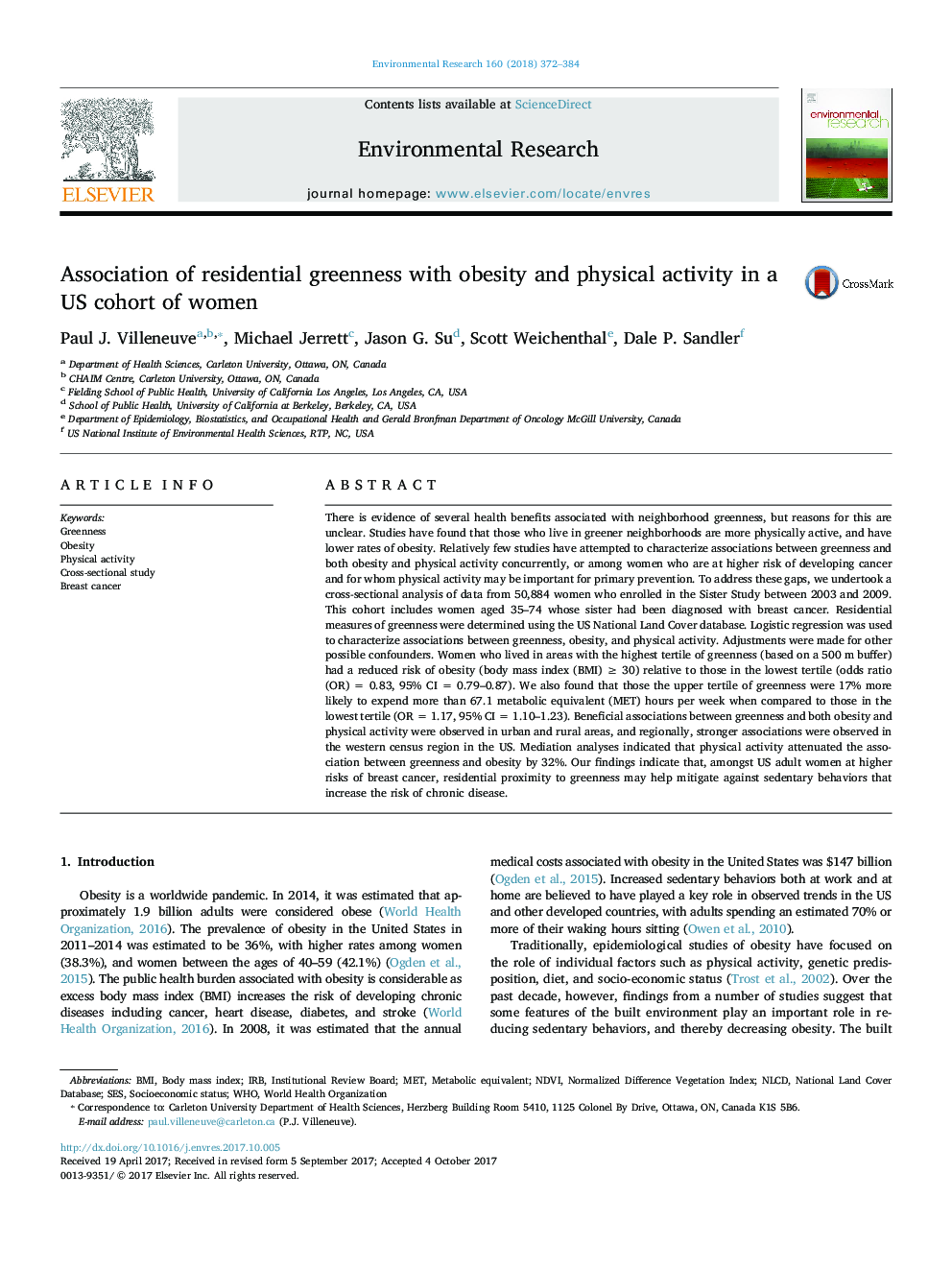| Article ID | Journal | Published Year | Pages | File Type |
|---|---|---|---|---|
| 8869262 | Environmental Research | 2018 | 13 Pages |
Abstract
There is evidence of several health benefits associated with neighborhood greenness, but reasons for this are unclear. Studies have found that those who live in greener neighborhoods are more physically active, and have lower rates of obesity. Relatively few studies have attempted to characterize associations between greenness and both obesity and physical activity concurrently, or among women who are at higher risk of developing cancer and for whom physical activity may be important for primary prevention. To address these gaps, we undertook a cross-sectional analysis of data from 50,884 women who enrolled in the Sister Study between 2003 and 2009. This cohort includes women aged 35-74 whose sister had been diagnosed with breast cancer. Residential measures of greenness were determined using the US National Land Cover database. Logistic regression was used to characterize associations between greenness, obesity, and physical activity. Adjustments were made for other possible confounders. Women who lived in areas with the highest tertile of greenness (based on a 500 m buffer) had a reduced risk of obesity (body mass index (BMI) ⥠30) relative to those in the lowest tertile (odds ratio (OR) = 0.83, 95% CI = 0.79-0.87). We also found that those the upper tertile of greenness were 17% more likely to expend more than 67.1 metabolic equivalent (MET) hours per week when compared to those in the lowest tertile (OR = 1.17, 95% CI = 1.10-1.23). Beneficial associations between greenness and both obesity and physical activity were observed in urban and rural areas, and regionally, stronger associations were observed in the western census region in the US. Mediation analyses indicated that physical activity attenuated the association between greenness and obesity by 32%. Our findings indicate that, amongst US adult women at higher risks of breast cancer, residential proximity to greenness may help mitigate against sedentary behaviors that increase the risk of chronic disease.
Keywords
Related Topics
Life Sciences
Environmental Science
Health, Toxicology and Mutagenesis
Authors
Paul J. Villeneuve, Michael Jerrett, Jason G. Su, Scott Weichenthal, Dale P. Sandler,
